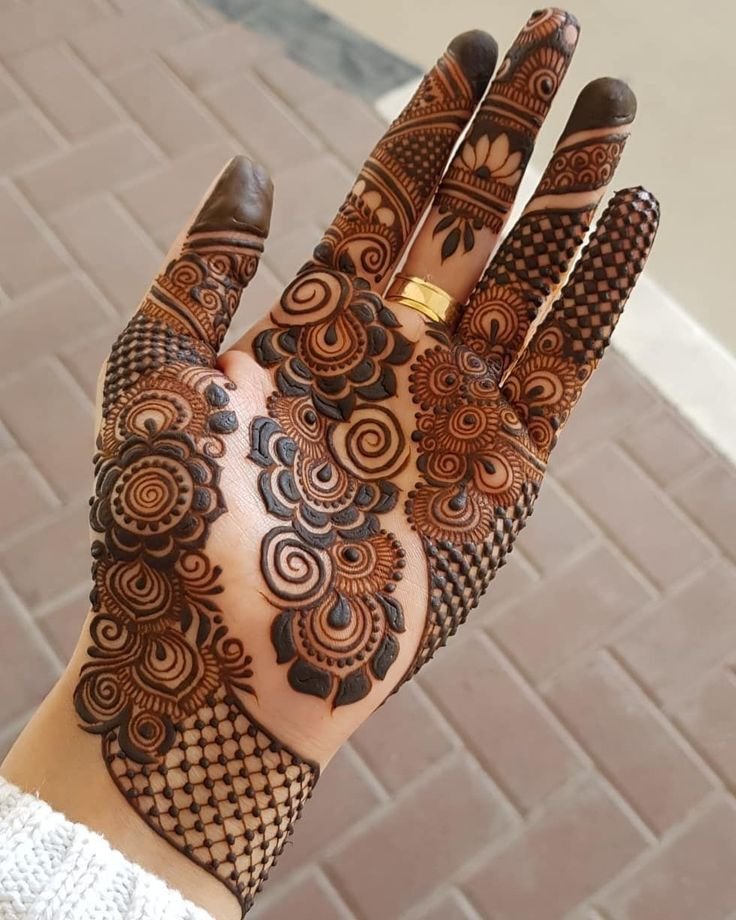Easy Front Hand Simple Mehndi Designs for Beginners
Mehndi, also known as henna, has been a part of traditional body art for centuries, especially in South Asian, Middle Eastern, and North African cultures. Over the years, its popularity has spread globally, and people from all walks of life now embrace the beauty of intricate henna designs. If you’re new to mehndi art or simply looking for some easy front hand simple mehndi design, you’re in the right place!
In this guide, we’ll explore everything from the basics of mehndi, how to create simple designs on your front hand, and tips to help you get started. Whether you’re practicing for a special occasion or just for fun, these designs will suit beginners and seasoned mehndi lovers alike.
What is Mehndi?
Mehndi is a form of body art using a paste made from the powdered leaves of the henna plant. It’s traditionally applied to the hands and feet during festive events like weddings, Eid, Diwali, and other cultural celebrations. Once applied, the mehndi paste dries, leaving a reddish-brown stain that fades over time.
Henna designs vary depending on the culture, with Indian, Arabic, and Moroccan styles being the most popular. While some designs are highly detailed, simple mehndi designs can be just as beautiful and are easier to apply, especially if you are a beginner.
Why Front Hand Designs?
Front hand mehndi designs are often the focal point of traditional henna art. These designs are visible and can be showcased easily in photos or at events. Since the front hand offers a flat surface, it’s the ideal spot for beginners to practice their mehndi skills.
Front hand mehndi designs can range from extremely simple floral patterns to complex, symmetrical designs. In this guide, we’ll stick to easy and simple designs that can be done with minimal practice.
Tools Needed for Mehndi Application
Before you start applying mehndi, it’s essential to gather the right tools. Here’s what you’ll need:
- Henna cone: You can either purchase a ready-made henna cone from the market or prepare your own henna paste at home. For beginners, buying a pre-made cone is more convenient.
- Tissue paper: To clean off any excess or mistakes.
- Toothpick: Useful for fixing tiny errors or adding delicate details to the design.
- Essential oils: Oils like eucalyptus or clove oil can enhance the color of the stain.
- Lemon-sugar mixture: Applying this mixture after the mehndi dries helps in deepening the stain.
Once you have all these materials, you’re ready to get started!
Tips for Beginners Before You Begin
- Practice on paper first: Draw your desired design on paper before applying it to your skin. This will help you become familiar with the flow of the design.
- Start simple: As a beginner, it’s best to start with simple patterns like flowers, dots, and lines. Once you’re more confident, you can progress to more intricate designs.
- Steady hands: Use your non-dominant hand to support your design hand. Try to keep your hand steady to avoid mistakes.
- Test the henna paste: Before applying the paste to your hand, do a small test on your skin to ensure you’re not allergic to the henna ingredients.
Easy Front Hand Mehndi Design Ideas
1. Floral Pattern
One of the most popular and easy designs for the front hand is a floral pattern. This design usually consists of one or two large flowers drawn on the center of the palm, with vines or leaves extending from the flowers towards the fingers.
Here’s how to do it:
- Start by drawing a small circle at the center of your palm.
- Draw petal shapes around the circle to form a flower.
- Extend curved lines (like vines) outward from the flower.
- Add small leaves or dots along these curved lines.
- Finish the design by drawing small dots on the fingers or extending the vine pattern onto one or two fingers.
This design is minimalistic and perfect for beginners as it doesn’t require too much precision.
2. Mandala Design
The mandala design is another simple and symmetrical design that looks stunning on the front hand. A mandala consists of concentric circles, often filled with repeated geometric patterns like triangles, petals, or lines.
Steps to create a mandala design:
- Draw a small dot or circle in the center of your palm.
- Around the dot, create a larger circle made of small petals or curved lines.
- Continue adding larger circles with different patterns as you move outward.
- You can leave the fingertips bare or add tiny details to them.
This design is easy to customize, and you can make it as simple or as detailed as you like.
3. Dotted Vines
For a really minimalistic and quick design, dotted vines are a go-to option. It’s essentially just lines and dots, which makes it incredibly simple to apply.
Here’s how:
- Start by drawing a wavy line from the bottom of your palm up to one of your fingers.
- Along this line, place small dots at regular intervals.
- You can also add tiny leaves or flowers along the vine for extra detail.
- Repeat this on another part of your hand or finger to balance the design.
4. Geometric Patterns
Geometric patterns can add a modern twist to traditional mehndi designs. This design focuses on shapes like squares, triangles, and lines.
Here’s a simple geometric pattern idea:
- Draw a series of triangles or diamond shapes starting from your wrist and moving upwards.
- Within each triangle or diamond, add smaller patterns like dots or diagonal lines.
- You can extend these geometric patterns onto your fingers for a cohesive look.
This type of design is straightforward yet visually appealing.
How to Care for Your Mehndi Design
Once you’ve applied your mehndi design, follow these tips to ensure that your design lasts longer and the stain is as dark as possible:
- Let it dry naturally: Allow the mehndi to dry on its own without rubbing or touching it.
- Apply lemon-sugar mixture: Once the henna is dry, apply a mixture of lemon juice and sugar to the design. This helps keep the henna paste in place for a deeper color.
- Keep the paste on for several hours: The longer the paste stays on your skin, the darker the stain will be. Try to leave it on for at least 4-6 hours, or overnight if possible.
- Avoid water: After scraping off the dried henna paste, avoid washing your hands with water for at least 12 hours. Instead, scrape off the paste gently and apply oil (like coconut or olive oil) to moisturize the skin.
Final Thoughts
Creating an easy front hand simple mehndi design doesn’t have to be complicated or intimidating. With a bit of practice and patience, anyone can learn to apply beautiful mehndi. By starting with the basics—floral patterns, mandalas, dotted vines, or geometric shapes—you’ll quickly improve your skills and be able to try more complex designs. Plus, the joy of seeing your hand adorned with beautiful henna art is well worth the effort!
If you’re just beginning, stick to the basics, enjoy the process, and most importantly, have fun experimenting with different patterns!






